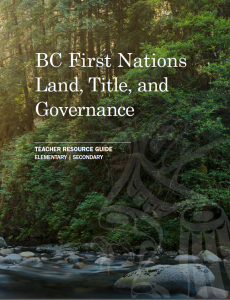Grade 6 Social Studies focuses so much on looking at government. It seemed extremely fitting to look into First Nations governance, before colonization, after colonization, and what it’s like now. Hearing my Indigenous Advocate talking about traditional leaders being chosen based on respect instead of elections made me very curious about the traditions. This resource from the First Nations Education Steering Committee is a great resource to help kids of all grades understand the past, present and future of First Nations land, title and government in BC. This would be a fantastic resource for early elementary all the way up to grade 12.
